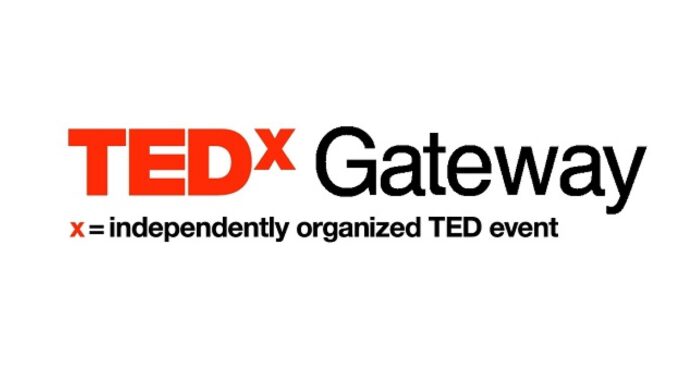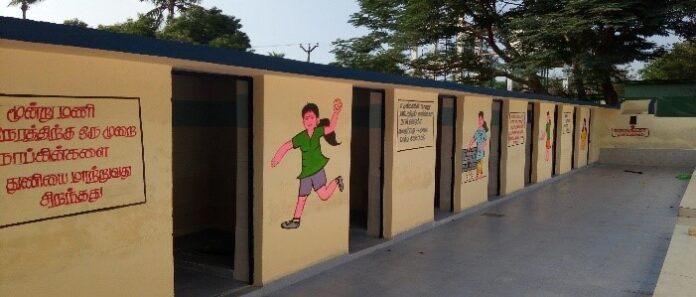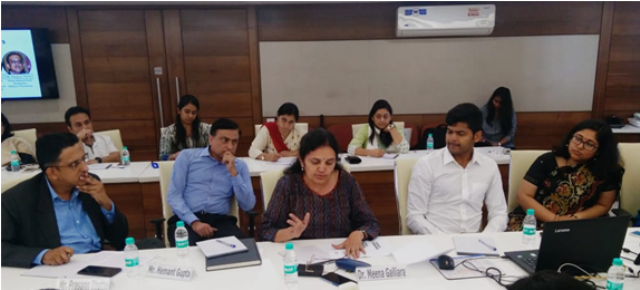10th Edition of TEDxGateway in Mumbai
The biggest melting pot of inspiring ideas is back with its 10th edition of TEDxGateway on 2nd December 2018. Hosted at the DOME @ NSCI Mumbai, this year, audiences can brace themselves for a promising line-up of 20+ powerhouse intellectuals, each having an extraordinary story to tell.
Staying true to its theme of ‘Ideas worth Spreading’, the event will welcome thought leaders, visionaries, disruptors and trendsetters from across fields like education, science, technology, art and culture. Additionally, the main event will also be webcasted across 200 campuses in India and multiple cities hosting TEDx’s across the world, targeting over 150,000+ viewers.
This year, TEDxGateway will provide a platform to some of the most iconic names from diverse fields of expertise. Additionally, the platform will also host a Padma Shree Award-winning photographer and a 6-time TED speaker, amongst other interesting profiles.
The event will also see grand performances by Storror, Maati Baani & Shankarananda Kalakshetra followed by multiple sponsored initiatives at the venue. To further bolster TEDxGateway’s vision, leading corporate organizations have joined hands in supporting the event this year including Aditya Birla, JSW, Rustomjee & Qatar.
When: December 2
Time: 9 am – 6.30 pm
Where: Dome @ NSCI, Worli (Mumbai)
Visit: tedxgateway.com
We are Water foundation drives the swachhata mission across nation by constructing toilets
We Are Water foundation recently completed its ‘WASH’ project in 17 schools across Chennai, Vellore, Alwar, Rewari and Faridabad targeted at providing better sanitation facilities to schoolchildren.
For this initiative, Roca joined hands with World Vision India, Habitat for Humanity India, Gramya Foundation and United Way of Chennai with an aim to improve and promote hygienic practices for children with special focus on girls by enabling schools to achieve sustainable access to adequate potable water and improved sanitation.
With an endeavour to provide a healthy and hygienic ambience for the school kids, the brand enabled the installation of overhead tanks/poly tanks, high quality bathroom fittings, hand wash sinks with other requested requirement for renovating the toilets such as floor tiles, submersible pump, white washing, bore well drilling etc. The foundation is glad to bring better sanitation facilities to over 14,000 students and inculcating the habit of clean practices among them through health/hygiene messages painted on toilet walls and Behavioural Training program.
KE Ranganathan, Managing Director, Roca Bathroom Products Pvt. Ltd said, “We believe in providing better sanitation and hygiene facility to all especially these school kids to focus and excel in their respective fields.”
Aligning to Government initiatives like Swachhata Hi Seva under Swachh Bharat Mission (SBM), the foundation is determined to drive the behavioural change and make larger impact in the lives of the individuals by providing adequate sanitation and water availability facilities across the country.
Maruti Suzuki’s Japan-India Institute for Manufacturing welcomes 2nd batch
After recording 100% placement for its first batch, Maruti Suzuki’s Japan-India Institute for Manufacturing (JIM) at Ganpat University in Mehsana, Gujarat welcomed its second batch of 362 students. JIM is a part of a joint initiative between the Government of Japan and Government of India to create a pool of 30000 skilled manpower for manufacturing industry in India.
Welcoming the second batch, A. K. Tomer, Executive Director, Corporate Planning, Maruti Suzuki India Limited, said “Our aim at JIM is to reduce the skill gap and empower students with skills relevant to the automobile industry requirement. Besides the core technical skills, JIM grooms students in Japanese Manufacturing Practices and Processes that are important to succeed at the workplace. Also, the mini-vehicle assembly line, well-equipped workshops give them an experience of working on a real shop-floor.”
Model ITI
Set up as a model ITI, JIM, Mehsana offers courses in eight trades related to automobile manufacturing, maintenance and services. The courses include Mechanic Motor Vehicle, Mechanic Auto Body Painting, Mechanic Auto Body Repair, Welder, Fitter, Electrician, Mechanic Diesel Engine & Driver Cum Mechanic. Some other features of the institute include a safety lab, virtual welding simulators and spot welding guns. This familiarizes the students with all the tools they need to work with when on an actual industry shop floor.
Japanese soft skills training
In addition to 38 hours of training meted out towards the National Council of Vocational Training (NCVT) certified curriculum, JIM dedicates 10 hours/week to train students in Japanese shop floor practices, soft skills, interview skills, English language and safety. Association for Overseas Technical Cooperation and Sustainable Partnerships (AOTS), Japan, along with Ministry of Economy, Trade and Industry (METI), Japan has developed the soft skills curriculum for JIM.
HGS ties up with Plan India for Comprehensive School Improvement Programme in Mumbai and Pune
Hinduja Global Solutions (HGS) has launched a new CSR initiative, HGS’ Comprehensive School Improvement Programme (CSIP), which aims to promote quality and holistic education for underprivileged children in Mumbai and Pune. HGS has tied up with Plan India, a nationally registered not-for-profit organization striving to advance children’s rights and equality for girls to create six “Model Schools” and provide all-round development opportunities for the children studying in these government schools.
HGS’ CSIP is a three-year project that is expected to help develop adequate school infrastructure to ensure that 5,000 children have a “joyful learning environment” within the school premises and support at least 1,000 children with learning difficulties to achieve age-appropriate learning level through remedial education. The programme also aims to educate and increase awareness amongst 20,000 parents about Right to Education to ensure that they actively engage for development of their children.
Speaking about the programme, Srinivas Palakodeti, Global CFO – HGS said, “India has been witnessing a significant rise in drop outs and absenteeism amongst underprivileged children in schools owing to lack of adequate amenities and proper infrastructure. Through this programme, we aim to help these schools to improve their infrastructure to ensure that holistic education opportunities are offered to all.”
HGS, along with Plan India, will upgrade and build science laboratories in schools, improve classroom infrastructure by procuring adequate benches, desks, fans, and paint the walls, etc., renovate/upgrade WASH (Water, Sanitation and Hygiene) infrastructure for boys and girls in the schools along with BCC (Behavior Change and Communication) program, and promote changing rooms for girls and installation of incinerators. The team will also promote remedial education for children who lack age appropriate learning level, develop and upgrade child friendly library, support children to set their career goals and positive attitude, promote and strengthen Children Parliament (Bal-Panchayat) and School Management Committee (SMC).
CSR: Inaccurate Portrayal Of LGBTQ Community In Indian Cinema
Cinema has had a tremendous influence on the people of India. This makes its content, stories and the portrayal of characters in cinema of utmost importance. While the Indian film fraternity has started to understand its responsibility and has come out with films addressing social issues, the portrayal of LGBTQ characters in Bollywood films is rather misguided.
Stereotyping characters from the LGBTQ community in Bollywood films has done little to reduce the confusion, phobia or overall negative sentiment towards the community.
The 2003 hit film Kal Ho Na Ho starring Shah Rukh Khan and Saif Ali Khan had comic sequences that made suggestive references to the duo being in a relationship, in front of the house maid who keeps reacting like a homophobe. This did nothing but strengthen homophobia and ridicule gay rights.
Ajay Devgan and Abhishek Bachchan starrer Bol Bachchan reinforced the stereotype of gay men being effeminate. Rishi Kapoor’s character of a gay professor in Student of the Year was another misrepresentation.
Movies where transgender people are shown as either begging or flirting with straight men, or suggesting that they are always thinking about sex, has increased the stigma around transgenders in the audience.
Deepa Mehta’s Fire (1996) was among the first few films in Indian cinema that dealt with lesbianism. The film was bold and certainly questioned a lot of patriarchal norms. However it was criticised for giving the impression that women turn into lesbians after having failed heterosexual relationships. The movie Girlfriend starring Isha Koppikar and Amrita Arora also misrepresented a lesbian character (Isha has a dark past and so becomes a violent lesbian).
There are movies like Fashion, Page 3, Margarita with a Straw, Bombay Talkies and My Brother… Nikhil which have touched on the LGBTQ community realistically. But the serious nature of these films has not done much to show a clear picture of their lives to an average person, who already has several misconceptions about the community.
We need more light-hearted films like Kapoor and Sons, which have less complex gay and lesbian characters who are confident about their choices and their persona. This would be a step forward in reducing the awkwardness people have with LGBTQ community members, and remove the stigma around the community.
This piece is part of a series on the LGBTQ movement in India.
Thank you for reading the story until the very end. We appreciate the time you have given us. In addition, your thoughts and inputs will genuinely make a difference to us. Please do drop in a line and help us do better.
Regards,
The CSR Journal Team
How SMEs Can Contribute To CSR
The quantum of revenue available for CSR from individual SMEs is expected to be small. However, all eligible companies in a specific geographical cluster, who single-handedly as well as collectively impact the same community, can pool their resources to create a sizeable CSR fund.
Low involvement
CSR is for all companies. SMEs in India have participated in CSR activities but these efforts have not been optimally delivered. One possible reason can be the fact that CSR activities depend on the profits of an SME and any fluctuations in profits can adversely affect their capability to continue their contribution for CSR. Another reason can be the limited human resources available to SMEs which may also result in the lack of a professional approach.
SMEs tend to focus on short-term activities that involve lesser operational costs. With the introduction of the new Companies Act, 2013, the SME’s approach to CSR has to be modified while keeping operational costs low. One viable alternative is to pool resources with other SMEs in the cluster and create joint CSR programmes managed by a single entity. This collaboration can be formed within the units in a cluster as they interact with the same communities and have already established associations that cater to the business needs of the units.
Collaboration has the following advantages:
1. Reduces operational cost
Individual CSR efforts by a company consist of establishing a CSR department, assessing the needs of local communities, undertaking programmes directly or through an NGO and conducting regular impact assessment studies. A common organisation catering to a number of companies will carry out these activities collectively and thus reduce the operational cost of management.
2. Undertake long-term projects
A major hindrance in developing long-term projects is the uncertainty in the CSR budget. This is dependent on the financial performance of the company. A fluctuating performance implies that the CSR budget allocations can be unreliable and can jeopardise a programme initiated earlier. Pooling resources addresses this issue to a certain extent as the other partners can increase their share in case there is variance in allocation from a certain segment of the cluster. The long-term programmes also have greater impact than the short-term projects. Communities are increasingly realizing the importance of the support offered by these programmes in making their lives better. Long-term programmes also lead to better community relations and this ensures avoiding situations of community unrest that hamper business activities.
3. Learning from experiences
A common entity with multiple participants from the cluster will help assess community needs, undertake relevant programmes based on past experiences and address a greater number of community issues.
Collaboration among the SMEs in a cluster also provides an opportunity to manage social and environmental issues and respond better to the pressure from buyers, who are trying to establish ethical supply chains and gain appreciation from the international community. Collaborations can also be forged amongst larger companies, possibly through industry associations, to enable them to address common issues plaguing a geographical region or an industry.
Cybersecurity Jobs In India
After the historic move of demonetisation in 2016, the government of India has tried to push the country towards digitisation. This has led to a drastic increase in demand for the cybersecurity professionals.
There was at least 1 cybercrime reported in India every 10 minutes the first half of 2016. However, the lack of talent has caused the India Inc. to struggle with these threats and invest heavily to prevent them.
Currently, there are about 30,000 cybersecurity vacancies in India including the vacancies at leadership levels. The required skills for these professionals include analytics, engineering, software development, intrusion detection, risk auditing, cryptography, forensic sciences and network security.
The scarcity in availability of these professionals have caused a hike in salaries of these profiles. According to the Job Portals, a cyber security professional with three years of experience can make up to 25 lakhs a year, where as a software developer with more than 5 years of experience at a multinational will be able to make up to 10 lakhs a year.
The demand for these professionals is majorly driven by banks, government, retail, BFSI and IT companies, consulting firms and startups. More B2C businesses hire these professionals because they deal with customer data which is highly susceptible to cyber crimes.
The cyberspace is expanding at a lightening fast speed. As it expands, the cyber crimes happening around the world keep getting more and more complex. This is why a cybersecurity professional have to be constantly updated. The candidates available currently in the country have basic certifications and training, which is not enough.
According to experts about a million more jobs will be generated in India in the cybersecurity space in next 5 to 7 years. In lieu of preparing for the future demand, Nasscom and Symantec have rolled out a curriculum on the subject with 10 specialised courses, which is a good start. However, government, corporates and educational institutions will have to work together to build a system and infrastructure that will create more qualified cybersecurity professionals.
Thank you for reading the story until the very end. We appreciate the time you have given us. In addition, your thoughts and inputs will genuinely make a difference to us. Please do drop in a line and help us do better.
Regards,
The CSR Journal Team
CSR Roundtable Report – Spends And Extent
Corporate Social Responsibility (CSR) has become globally a key issue of concern for contemporary businesses. The CSR construct for India has been redesigned with the inclusion of CSR under Section 135 of the Companies Act 2013. The covert intention of CSR regulations was to engage corporates in solving complex social problems.
Schedule VII of the new CSR rules 2014 has specified 11 broad areas of concerns of the Government wherein it requires private participation to supplement its efforts in carrying out activities needed for twin objectives of uplifting people and saving the environment. Since 2014, the industry has been making efforts in this direction through direct and indirect channels, and spending money in various activities of CSR to fulfill the regulatory requirements.
Open dialogue
BSE Institute organised a Roundtable on: CSR Mosaic – An Open Dialogue in August to assess what objectives of CSR regulations were achieved and to what extent. Invitees for the roundtable included people from academia, industry and the NGOs. More than 35 people attended the roundtable and shared their thoughts.
Dr Shariq Nisar, Head Research BSE Institute highlighted the importance of roundtables like this where important national issues could be discussed openly between different stakeholders. He also emphasised that it is pertinent to review Schedule VII beyond mere ‘spent’. This kind of mapping is expected to help the companies to do an informed planning of their spending for the future and guiding the flow of effort and funds into the areas being considered important by society at large.
Moderator Payal Agarwal, Country Head, International Cooperative and Mutual Insurance Federation (ICMIF) explained the agenda. The roundtable had four main speakers:
- Prof Vandana Tripathi – Asst. Professor ITM Business School Kharghar
- Meena Galliara – Director Jasani Center of Social Entrepreneurship, NMIMS
- Hemant Gupta – MD & CEO, BSE Sammaan CSR Ltd.
- Prasann Thatte – Head Monitoring – Evaluation, Reliance Foundation
Prof. Vandana highlighted the important rules related to CSR expenditure in India and the areas which are mandated by government for CSR purposes. Following table from her presentation highlights year-wise expenditure on CSR.
CSR Spending in India (Number of Companies)
| 2016-17 | 2015-16 | 2014-15 | |
| Zero Spent | 346 | 9219 | 8833 |
| Less Than Prescribed | 3718 | 6268 | 4001 |
| More Than Prescribed | 2203 | 3380 | 1633 |
| Exactly as Prescribed | 19 | 317 | 477 |
(Source: National CSR Portal)
Prof. Vandana analysed the findings with the help of primary data she had collected from academicians, industry practitioners and NGOs heads (all together 93). She shared with the participants her aim to develop a methodology for rating corporates based on their proximity and departure from the set norm.
CSR spend
Dr Meena Galliara pointed out that discussions on CSR spend is like that of “poverty figure” where various agencies/ organisations present different figures as there is no homogeneity adopted for computing the same. She informed the participants that Government of India has undertaken the lead to be more proactive by creating the National CSR portal however data for 2016-17 is not updated yet. While comparing FY 14-15 to FY 15-16, one may note a 28% increase in number of companies contributing to CSR, but she cautioned that this should not be the only metrics adopted to measure performance. One must move beyond the quantitative approach of CSR spend to ‘How’ it is getting spent. It would further determine as to whether enforcement is further required, or an enabling environment will be the future.
She further commented on the monies spent sector wise and pointed out that opinion taken from public perception matches in the area of health, education and environment. She elaborated that ‘distorted information’ could be avoided by segregating the different thematic areas and rigorously examining compliances with schedule VII.
Opinion gathering
She was of the view that some parts of mismatch with the Govt data could be attributed to the low sample size hence an attempt should be made to make it broad-based. To achieve this, she suggested that opinions should be gathered from various states. It will help in removing the geographical concentration bias of the sample.
She suggested to give more weightage to opinions gathered from the corporate executives who are the real decision makers. Other stakeholders such as academicians or consultants’ views may be reflecting the best of both the worlds however it should not be weighed equal to that of a corporate. She shared that true value creation on CSR research could be done by reaching out to the Independent Directors of the CSR committee. Finally, she recommended concentrating on 2-3 leading sectors so that the recommendations can be easily implemented.
Macro level outlook
Hemant Gupta – MD & CEO, BSE Sammaan CSR Ltd., said that macro level outlook of CSR spent is one aspect, which has been considered but the local needs must be identified and incorporated. Although the spending according to norms would be more in sync as they reflect the majority opinion, we can only nudge the corporates to fall in line as nowhere it is mandated that such considerations are required.
If you break the jigsaw puzzle, you can identify 3 key stakeholders viz Government, Corporate and NGOs. Corporates can be classified depending upon their level of involvement and approach to CSR:
- Genuine Intent – based on needs assessment
- Cheque based philanthropy / compliance
- Indifferent
- Leader driven with their interests of sectors
CSR decision making in corporates only partially emerges from the location of the factory and a lot is from the head office therefore it would be pertinent to look at the CSR spent both locally and nationally.
NGO angle
From the NGO perspective, it is important to note that dealing with corporates is different due the way they communicate and demand reports to meet the regulatory requirements. He also pointed out the difference in the way corporates deal with NGOs while conducting (too strict) due diligence. He differentiated amongst the donors (CSR funds and traditional donors) and shared that traditional donor agencies tend to continue their association over a certain number of years while the corporates tend not to do it for longer period (primarily time horizon is 12 months).
Unfortunately, the other thing which is demanded of NGOs is brand building which other philanthropists do not require. Therefore, one can say that the role of NGOs is changing and requires capacity building. He said that the above research would be useful to assess CSR implementation at the Macro level.
Drop in the ocean
He emphasised that total CSR budget spent is still a drop in the ocean compared to government spends on social development sector. Working closely with government, he has been able to observe their struggle in terms of grappling with some of the lacunae that the CSR Act has thrown up.
Schedule VII is very constraining in terms of whether the needs assessment should drive CSR initiative or Schedule VII. He cited the example of Kerala Relief Works and shared that a lot of companies could have contributed their products/ services directly during Kerala Relief and have it counted as CSR however since that is not permitted under Sec 135, it is not being done.
He further elaborated that Regulators are trying multiple ways to enhance performance. They are open to suggestions. He also pointed out to the need for collaboration among stakeholders so that extensive impact is created of such interventions.
BSE Sammaan, as an enabler in the CSR ecosystem is a part of the discussions in the Government as well as fostering collaboration. Sammaan is also assisting Corporates in making more effective CSR investments by offering its family of 1,300 NGOs to them.
Exact definitions
Prasann Thatte – Head Monitoring – Evaluation, Reliance Foundation said that one of the challenges is to exactly define what a CSR project really is. When concept notes are written, a corporate does not necessarily think about these ‘buckets’ of schedule VII. A Corporate usually responds to the need (complex and multiple) which may not be necessarily in black and white and response therefore is usually a bouquet of interventions combining different sectors.
He further elaborated that Swachh Bharat Kosh received meagre funds but the bright aspect here is that corporates have taken the onus to invest in sanitation directly instead of simply making a cheque transfer to a government fund. Corporates should bring in their technical expertise instead of merely being financiers.
He emphasised the fact that large corporates usually follow long-term strategies for development and set aside funding commitment for 5 years or more. Hence it may be difficult for them to switch to any thematic area other than those already decided, as against the companies with smaller ticket size who can shift easily. He also mentioned that for corporates, it makes more sense to align themselves with national programmes viz Skill India/ Digital India as these programs reflect the national development priorities and any progress on these fronts takes the country closer to achieving the SDGs.
He concluded that it would be pertinent to investigate CSR funds spent in the Aspirational Districts.
Other points discussed
- Currently data is very skewed and interventions from government and other pressure groups could demand more transparency.
- Benchmark the CSR funds vis a vis country’s current level of competitiveness on different globally acceptable index such as Human Development Index, Sustainable Development Goals etc. It would provide comprehensive approach towards needs assessment as well as add to the credibility to the measure.
- Determination of the norm is critical to the research. Adding more variables such as needs assessment etc would be strengthening the basis of the index. Elaboration upon the existing indices would benefit the stakeholders to derive greater value. The index must consider the quality of CSR programmes even though the spent may not necessarily be 2% of net profit.
- This index appears to be invaluable to NGOs to determine their own strategies of strategic collaboration with corporates. It would enable them to identify more with the local needs, national priorities and the corporate interests. Such aggregation of information would layout the approaches on how to bring local needs in defining any program interventions. This would essentially involve keeping the index simple so that grassroots NGOs too can comprehend it easily.
- CSR should be reviewed from a policy perspective as to what are the priority areas for government spending. It would be observed that only 2 priority areas of Health and Education are vehemently pursued. The other issues could be dealt with governance reforms and not through CSR alone. For eg, Gender Inequality should be dealt more with as creating an enabling environment.
- Volatile situations in different geographical locations may be limiting the CSR funds access therefore how would that be accounted for.
Outcome of the Roundtable
Conclusion was reached on redefining the scope, boundary and methodology for building the index. It needs to be broad based to become largely acceptable. It needs to use both quantitative (CSR spent etc.) and qualitative variables (CSR Policy review etc). Involvement of stakeholders particularly industry experts and others involved in addressing the challenges faced by CSR practitioners is imperative to arrive at a consensus as to what finally will be the construct of the index.
Views of the author are personal and do not necessarily represent the website’s views.
Thank you for reading the column until the very end. We appreciate the time you have given us. In addition, your thoughts and inputs will genuinely make a difference to us. Please do drop in a line and help us do better.
Regards,
The CSR Journal Team


















